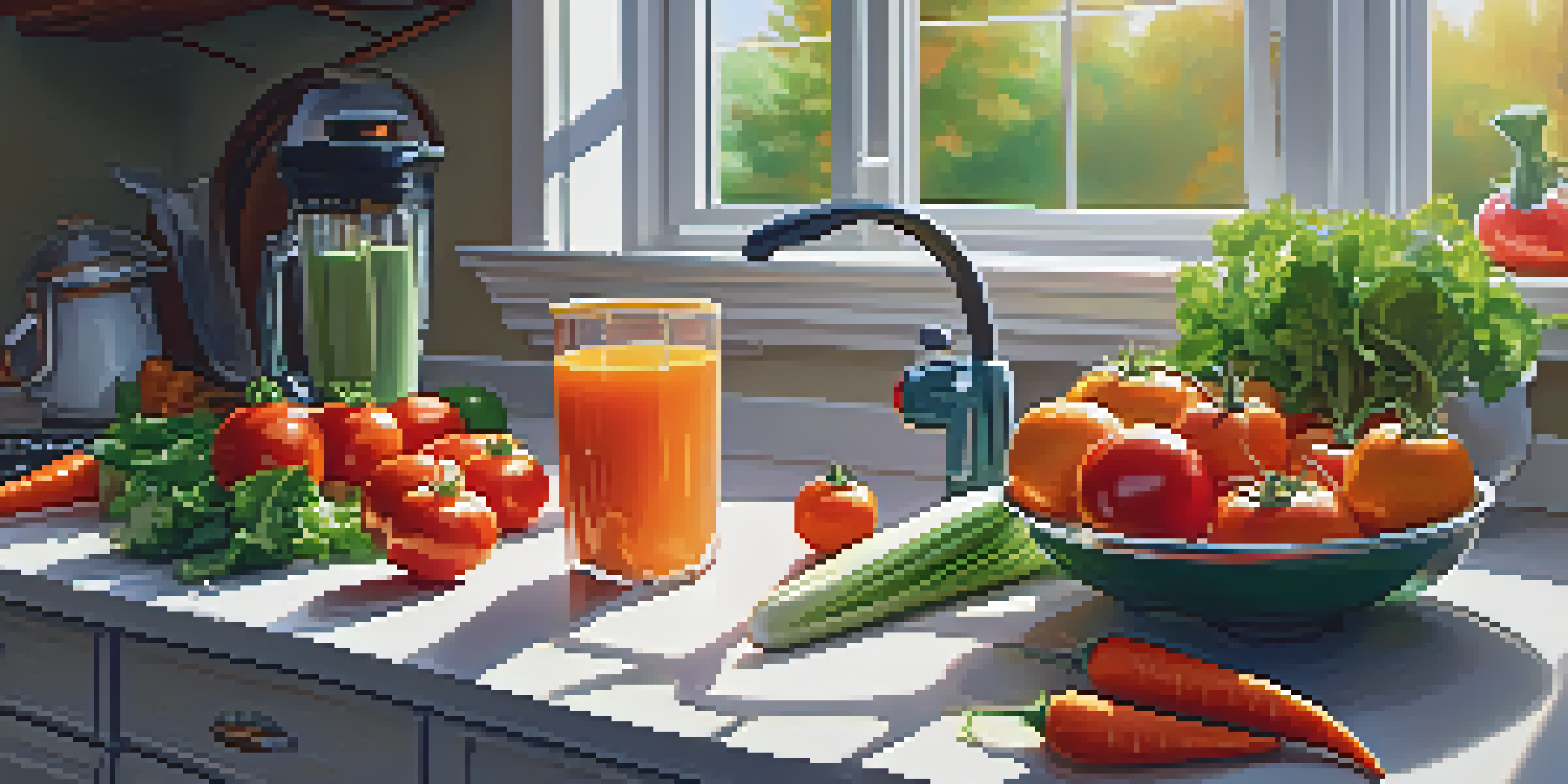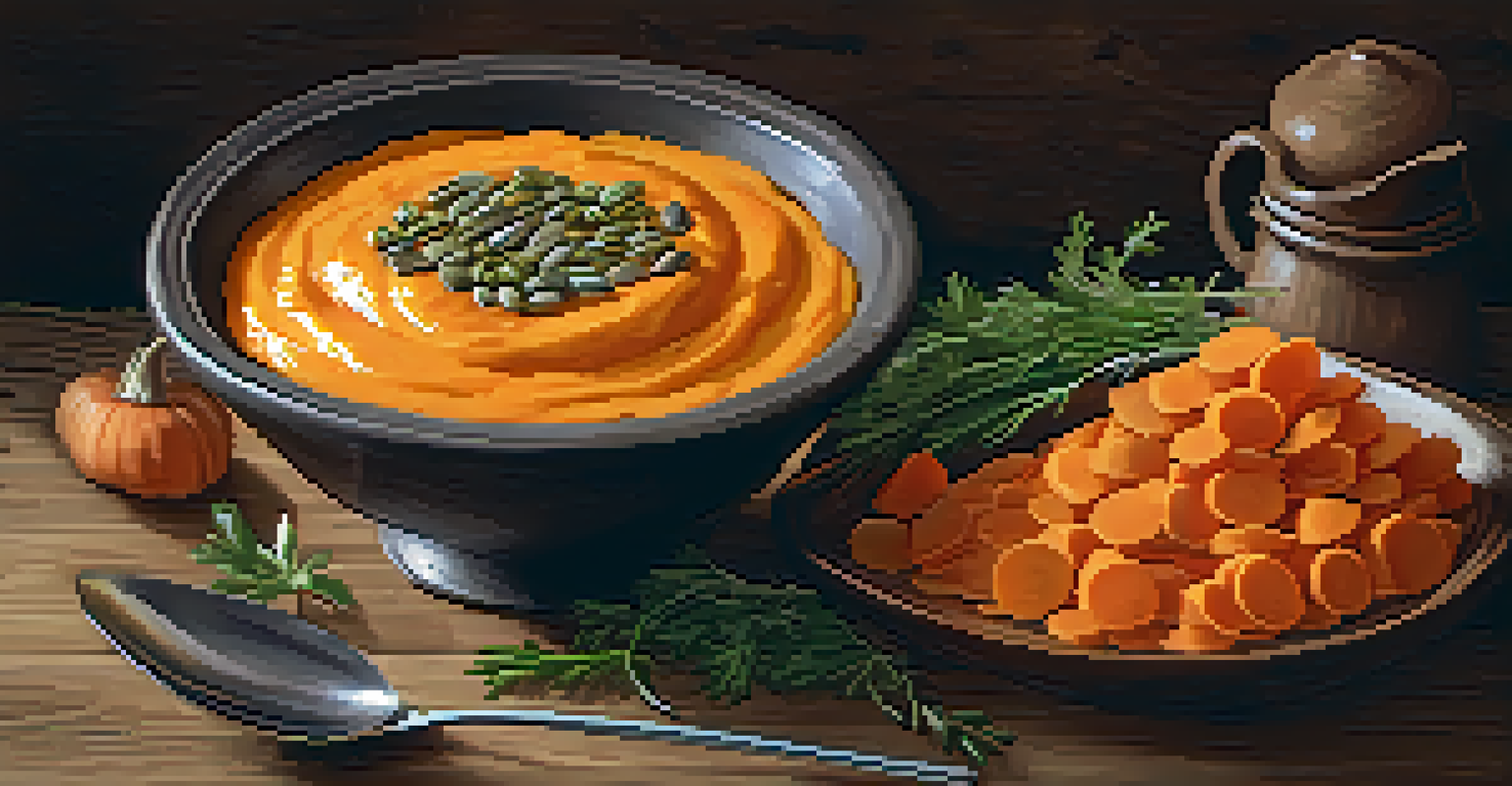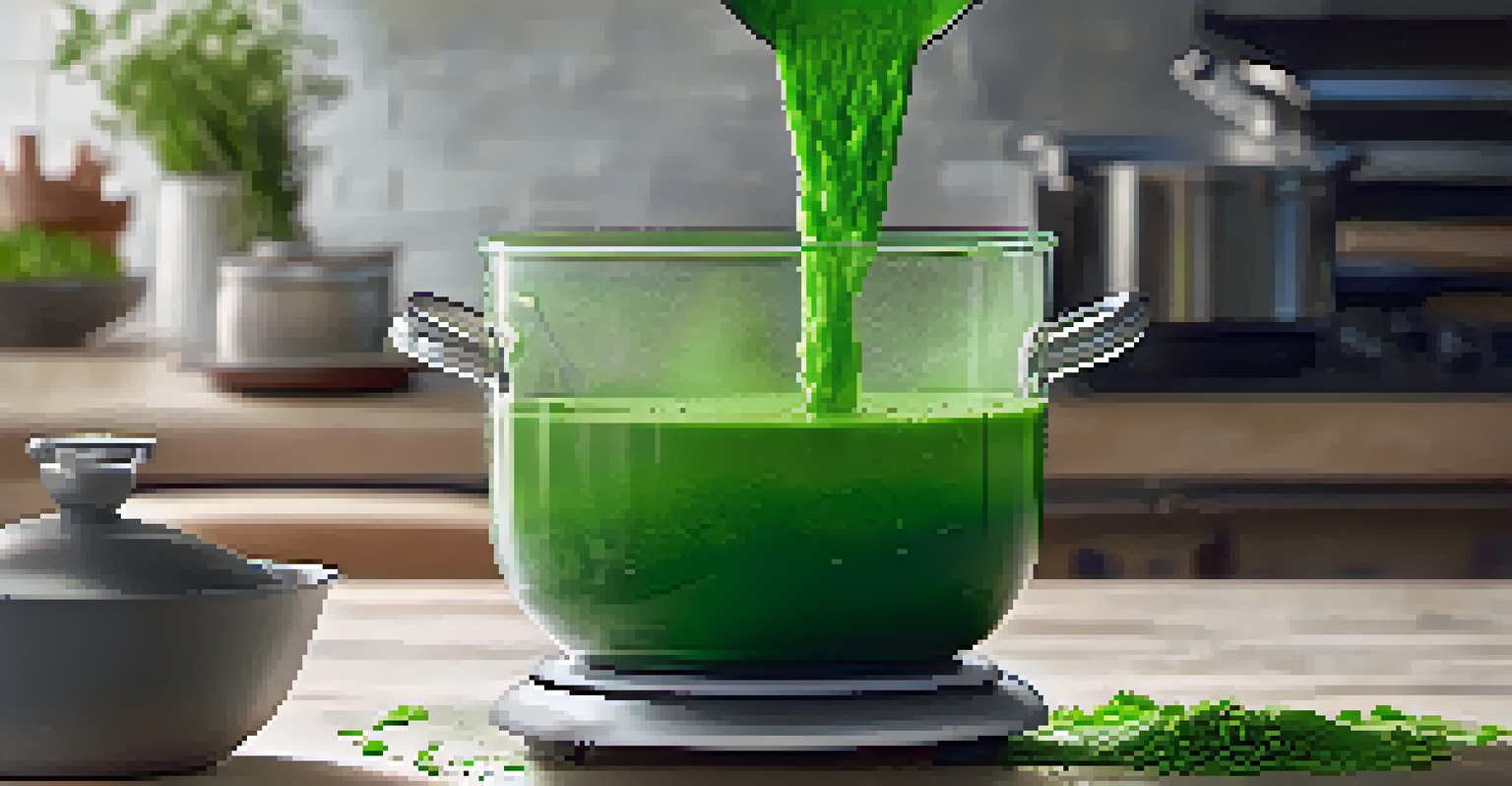Creative Puréed Dishes: Techniques for Smooth and Flavorful Meals

Understanding Puréeing: The Basics and Benefits
Puréeing is a cooking technique that transforms ingredients into a smooth, creamy consistency. Whether you’re looking to create a delicious soup or a flavorful sauce, understanding the basics of puréeing is essential. This method not only enhances the texture of dishes but also concentrates flavors, making meals more enjoyable.
Cooking is like love. It should be entered into with abandon or not at all.
From soups to baby food, puréed dishes can cater to various dietary needs and preferences. For instance, individuals with chewing difficulties often benefit from puréed meals, ensuring they receive proper nutrition without compromising taste. Plus, puréed dishes can be a fun and creative way to explore new flavors and ingredients.
Using fresh, seasonal ingredients can elevate your puréed creations. Think of vibrant vegetables or fragrant herbs that can be blended together to create a colorful and nutritious dish. The beauty of puréeing lies in its versatility and the chance to experiment with different flavors!
Essential Tools for Perfectly Puréed Dishes
To create smooth and flavorful puréed dishes, having the right tools is crucial. A high-quality blender or food processor can make all the difference, ensuring a velvety consistency. For smaller batches, an immersion blender can be a handy tool, allowing you to purée directly in the pot.

Don’t forget about other essential kitchen gadgets like a fine-mesh sieve or a food mill, which can help remove any remaining chunks for an ultra-smooth texture. While these tools may seem basic, they can significantly impact the outcome of your dish. Having an organized kitchen setup can streamline your cooking process.
Puréeing Enhances Flavor and Texture
This cooking technique transforms ingredients into a smooth consistency, concentrating flavors and improving dish enjoyment.
Remember to also consider the size of your batches. Working in smaller quantities can help achieve a more uniform purée, as larger amounts may not blend as effectively. By choosing the right tools and working smartly, you can make smooth puréed dishes with ease.
Choosing the Right Ingredients for Puréed Dishes
The key to a successful puréed dish lies in selecting the right ingredients. Fresh vegetables, ripe fruits, and flavorful herbs should be at the forefront of your selection. Ingredients with high water content, like tomatoes and cucumbers, can create a lighter purée, while starchy vegetables like potatoes and carrots contribute to a creamier texture.
The only real stumbling block is fear of failure. In cooking, you’ve got to have a what-the-hell attitude.
Don’t shy away from experimenting with different flavor combinations! Pairing unexpected ingredients can lead to delightful outcomes. For example, blending sweet roasted red peppers with creamy coconut milk can yield a surprisingly delicious soup that excites the palate.
Additionally, consider the nutritional value of your ingredients. Incorporating leafy greens or legumes can boost the health benefits of your puréed dishes, making them not only tasty but also nourishing. The right ingredient choices can transform a simple purée into a standout meal.
Seasoning and Flavoring Your Puréed Meals
Seasoning is the secret weapon in creating standout puréed dishes. Just like in any meal, the right balance of spices and herbs can elevate your dish from bland to brilliant. Start with basics like salt and pepper, then explore flavors like garlic, onion, or fresh herbs to enhance the overall taste.
Acidity is another important factor in puréed dishes. A splash of lemon juice or a dash of vinegar can brighten up flavors and add depth to your purée. This balancing act of flavors can make your dish more exciting and complex, turning a simple purée into a culinary masterpiece.
Essential Tools for Puréeing
Using the right kitchen tools, like blenders and immersion blenders, is crucial for achieving a velvety purée.
Don’t hesitate to taste as you go. This iterative process allows you to adjust seasonings to your preference, ensuring the final dish is just right. Remember, the goal is to create a harmonious blend of flavors that makes every bite enjoyable!
Cooking Techniques for Flavorful Puréed Dishes
The cooking technique you choose can significantly influence the flavor profile of your puréed dish. Roasting vegetables before puréeing can enhance their natural sweetness and bring out deeper flavors. Think of roasted garlic or caramelized onions, which add a rich, savory note to your purée.
Steaming is another great technique, preserving the vibrant colors and nutrients of your ingredients. This method is particularly beneficial for greens, as it helps maintain their bright green hue and essential vitamins. Experimenting with different cooking methods can reveal new textures and tastes in your puréed creations.
Lastly, don’t overlook the power of simmering. Cooking your ingredients in broth or stock can infuse them with additional flavor, resulting in a more complex purée. Each technique has its unique benefits, so feel free to mix and match based on your desired outcome.
Creative Serving Ideas for Puréed Dishes
Serving puréed dishes can be just as exciting as preparing them! Consider using unique bowls or plates to present your purée creatively. A bright, colorful purée can be garnished with fresh herbs or a swirl of olive oil to create an appealing aesthetic that invites diners to enjoy your dish.
You can also pair puréed dishes with crunchy toppings to add texture. For instance, serving a smooth carrot purée with toasted pumpkin seeds or a drizzle of balsamic glaze creates a delightful contrast. This not only enhances the flavor experience but also adds visual interest to your meal.
Creative Ways to Serve Puréed Dishes
Presenting puréed meals with unique garnishes and textures can elevate the dining experience and make meals visually appealing.
Moreover, consider incorporating puréed dishes into your meal structure. They can be served as appetizers, sides, or even main courses. With a bit of creativity, you can transform simple puréed dishes into highlight moments of your dining experience.
Storage Tips for Leftover Puréed Dishes
Storing leftover puréed dishes properly is key to maintaining their quality and flavor. Most purées can be stored in airtight containers in the refrigerator for up to three days. Ensure they are cooled down to room temperature before sealing them to prevent condensation buildup.
For longer-term storage, consider freezing your puréed meals. Dividing portions into freezer-safe bags or containers allows for easy reheating later. Just remember to label your containers with the date and type of purée to keep track of what you have on hand.

When reheating, it’s essential to do so gently to avoid altering the texture. A slow simmer on the stove or a gentle microwave setting can keep your puréed dishes smooth and enjoyable. With these storage tips, you can savor your delicious creations even after the main meal is over.